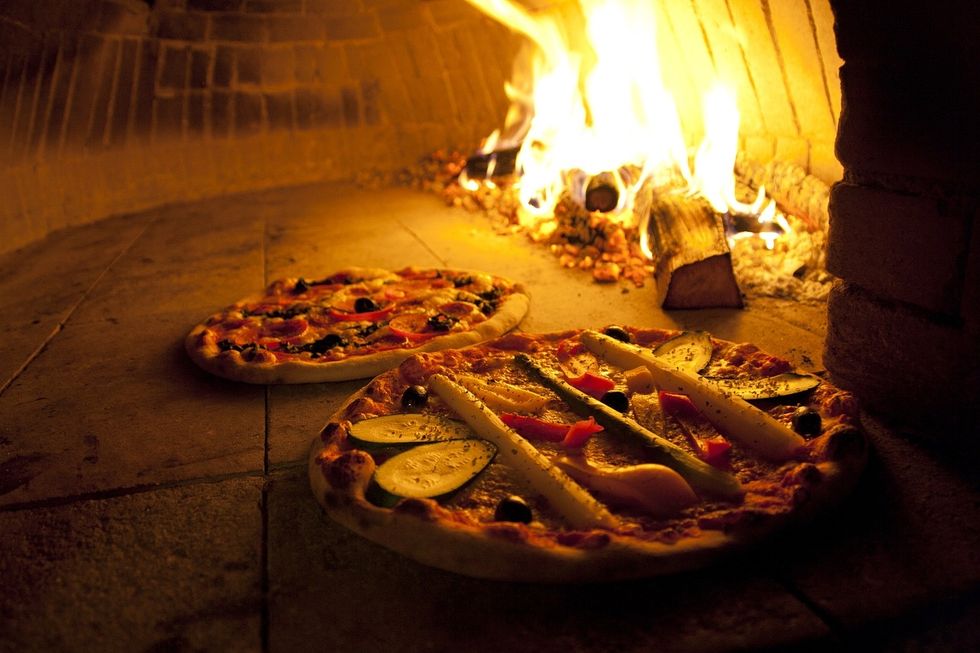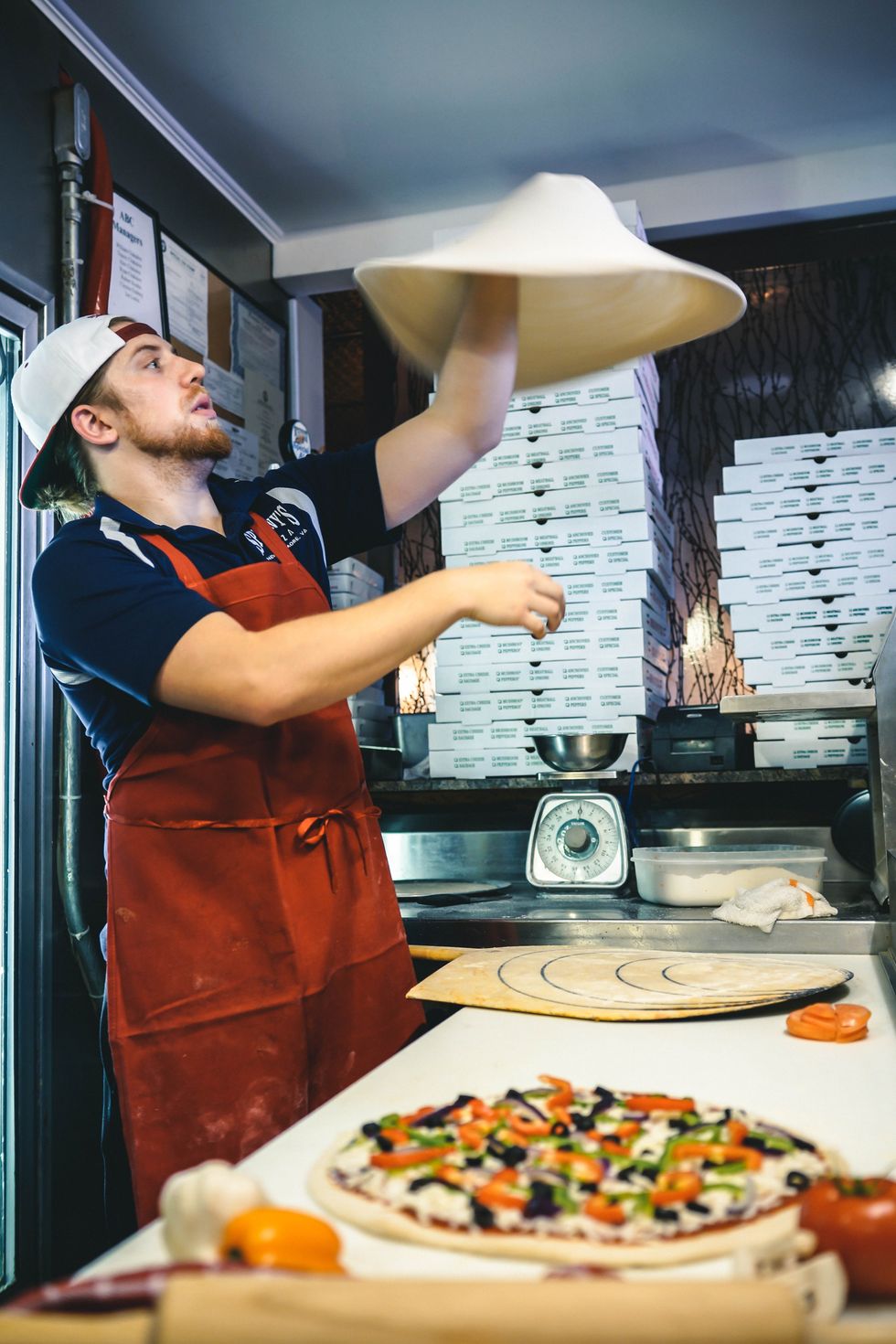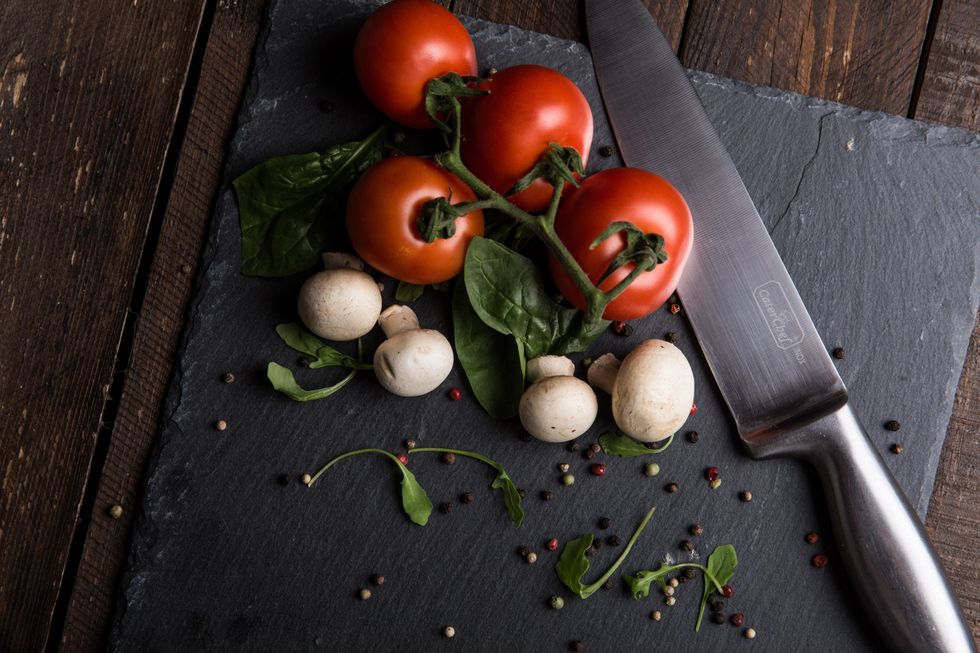Like most people in America, my family buys pizza at a fast food chain or restaurant instead of making it ourselves because we're busy, impatient people who don't know how to bake a pizza. Our attempts to make them from scratch have usually ended up being massive failures with a dry, bland crust that basically has the texture of glue. We haven't had much success with frozen grocery store pizzas either which usually turn out quite doughy, tasteless and lackluster.
After all of these repeated failures, we had begun to believe it was impossible to make a good pizza at home without a pizza stone and a firey pit (both of which are not usually available on hand unless your house is on fire). That was until we watched a YouTube video that would change the course of our pizza making forever.
After trying everything in the video, we made an amazing Margherita pizza that rivaled those of some fancy restaurants! To my fellow people in Alpharetta, the crust seriously ended up on par with the pizza from Cafe Antico at Avalon. Except at home, we could put whatever we wanted on it and only had to spend $7 on ingredients compared to $21. Unfortunately, the video is Chinese so most people can't understand what it teaches. However, I thought it'd be a tragedy for people not to know about how to make a great pizza for cheap so I thought I'd translate some of its main points about the essentials needed to make a good pizza.
An extremely high temperature

There always seems to be a clear, noticeable difference in a Digiorno's pizza baked at home and a store-bought pizza — especially in the dough. The pizza crusts in restaurants feel fluffy or crunchy with a nice bite and flavor while home-cooked pizza crusts tend to be miserable, chalky, pasty and hard.
Contrary to what most people think, the main flaw these home-cooked pizzas lies not within the dough itself but within the method of baking. This is the first and utmost priority to consider. Most instructions tell people to cook pizza dough in the oven at a measly 425 degrees Fahrenheit or even worse, 350. Unfortunately, this isn't hot enough and requires a longer baking time which dries out the dough giving it that chalky, hard, unappealing texture.
To cook a good crust, the most ideal thing to do is crank the oven on to the highest temperature possible which is usually somewhere around 550 degrees Fahrenheit. However, as you can imagine, this is extremely hot meaning the pizza usually only stays in for around five to 10 minutes. Thus, it's important to keep a close eye on the pizza while it's cooking to make sure it doesn't burn to a crisp. But on the bright side, five minutes go by pretty quickly, and the shortened cooking time means there's less standing in between you and dinner!
Heat from the bottom
Another important element to consider is which direction the heat should come from. Since the crust will take longer to cook than the toppings, there needs to be a balance between the two cooking times. Thus, a way to get the crust cooking faster is to add more heat from the bottom! While the oven is preheating, take the baking pan into the oven to get it hot before sliding the pizza on it when the oven is ready.
Since baking cooks food from all around, if the cheese and toppings on the pizza don't seem cooked enough by the time the dough is, put the oven on broil for a minute. Since broiling cooks food from the top, this will ensure a fully cooked pizza from all sides!
Stretched dough

Though rolling pizza dough evens the pizza, is more convenient and gives the dough a nice shape, it also squashes some air out of the dough. There's a reason you see people tossing their pizza. Tossing the dough keeps air in which is actually pretty important for a crispy and fluffy crust instead of a compact, lifeless one. The best crusts always seem to have some browned, blackened or cracked air bubbles dispersed throughout.
Though you don't have to be a pizza tossing expert, just stretching out the dough instead of rolling it could make a difference! It's okay if your pizza doesn't end up as a perfect circle either. In my opinion, that adds character.
Fresh or good quality ingredients

Try not to skimp out on ingredients — especially with the cheese. Good mozzarella has such a nice texture and adds that cheesy stretchiness to your pizza. Many grocery stores sell good cheeses in their deli section including fresh mozzarella rounds and blocks of parmesan. These differ from those bags of shredded mozzarella in that they're fresher and moister than shredded cheeses which are usually dried to give them a longer shelf life.
However, fresh or good-quality doesn't necessarily equate to inconvenient. If you don't have time to make marinara sauce or pizza dough which can take hours to rise, you can also buy these from the store. We bought fresh, ready-made pizza dough from Publix in the bakery section and a regular jar of spaghetti sauce for our pizza, both of which turned out great and saved us a bunch of time!
I hope after these tips, you can get a better grasp on baking a pizza, and try it on your own sometime! The process of making it is a great way to get people to come together, and the end result is very rewarding to share. It's so much more sustainable and cheap to make something that tastes just as good as a dish in a restaurant. Hopefully with this advice, you can become a pizza master. I wish you the best of luck in all of your pizza endeavors!











